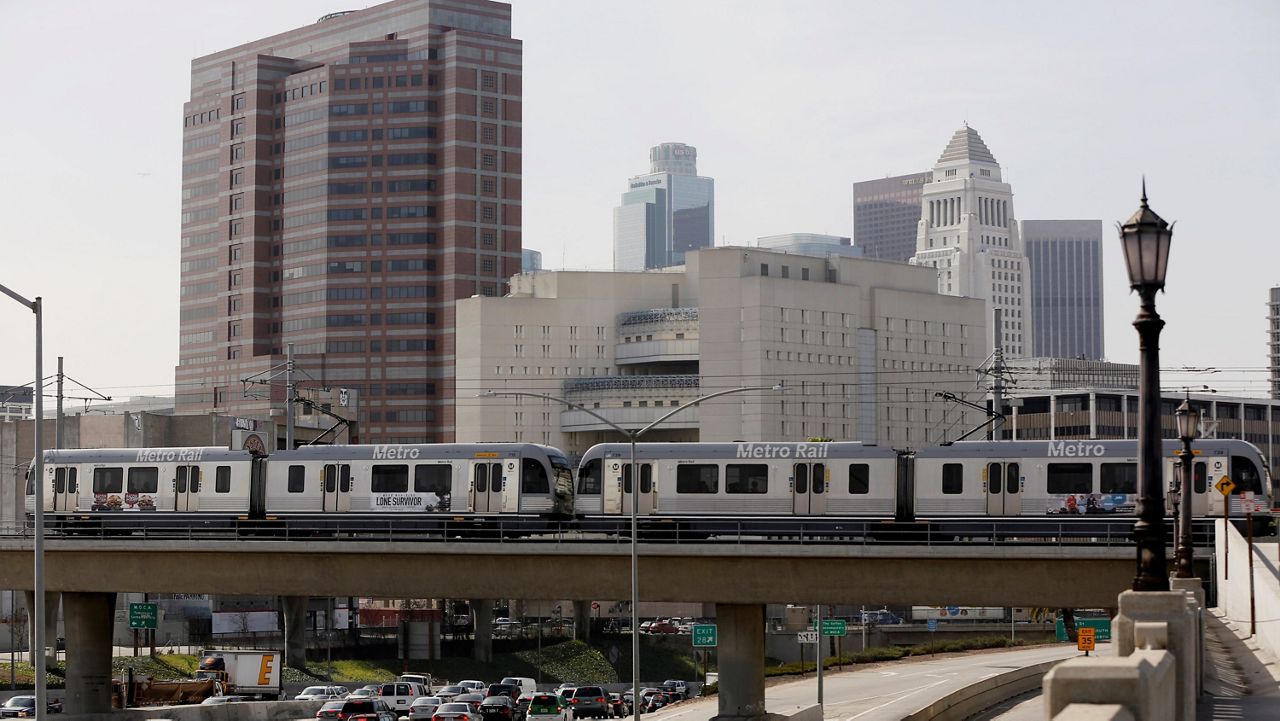DOWNEY, Calif. — In 1979, Lillian Chacon and her husband, Frank, were driving through the city of Downey. They had two young sons and were hoping to move out of the Pico Rivera neighborhood, where they were living at the time, to the suburban city of Downey.
They spotted the perfect house on a quiet cul-de-sac.
"I remember when we cruised by here and saw the for sale sign," said Chacon. "I said to my husband, 'this is the house you deserve.' He had gotten this promotion, and I was very proud."
They bought the house, which had been built just a few years earlier, and have lived there ever since.
It's a few hundred feet away from the Interstate-5 freeway, but you can't see the highway from the street — tall brush covers the sound wall. You can, however, hear the traffic roaring past like a loud river — large trucks bringing goods inland from the ports.
Chacon became concerned late last year when Metro and Cal Trans released details of their I-605 corridor improvement project. It was a proposal without concrete plans, but one of the possible projects entailed expansion along a stretch of the I-5 that runs through Downey, right by the Chacon's house.
If the expansion were to go ahead, the Chacon's home could potentially be knocked down or they might end up living much closer to the freeway.
It wasn't the first time Chacon had heard about freeway expansion projects. In 2014, there had been rumors that building works could be in the pipeline, but nothing materialized.
Now, Chacon said, she's in a state of anxiety, waiting to hear how the prospective plans might impact her house.
"When we heard about it the first time, we were alarmed, we were in a false fantasy thinking it wasn't going to happen again. This is a resurgence of that nightmare, we are on edge and in fear mode," she said.
Metro said there's no cause for alarm.
In a statement, Metro officials said:
"This I-605 Corridor Improvement Project is currently in an early environmental planning phase. At this point, we are only developing studies to identify mobility deficiencies in the corridor and proposing potential design solutions to those problems. At the conclusion of the studies, we will report the findings to our Board of Directors in a few months. There are no project updates at this this time."
The City of Downey released a statement last year officially opposing the demolition of homes. However, they did clarify that they supported improvements to the I-5, a freeway that's heavily congested.
James Moore, professor of Industrial and Systems Engineering at USC's Viterbi School said there are other ways to combat congestion, besides adding lanes to L.A. freeways.
"It's futile, to try and build your way out of congestion, we have ample evidence that it's futile, because we have never succeeded," he said.
Moore noted that there are proven ways to reduce congestion that Metro might consider prior to building out the freeway.
"I would consider putting money into management techniques, to see if we can't improve the level of service with congestion tolls for example," he said.
He added that tolls disincentivize people to use the freeway, especially during peak traffic times. Added lanes, on the other hand, often encourage people to use the freeway.
Moore pointed out though, that while freeway expansion doesn't reduce congestion, it can be a boost to the economy.
"There's stimulus that can come from construction, it's a project that injects capital into the workforce, but primarily these projects allow people to buy goods and services they wouldn't otherwise consume," he said.
There is a multitude of economic and bureaucratic decisions at play between Metro, Cal Trans, construction, and the City of Downey. But, for Chacon, this is personal and emotional.
"It's not just things, you know? It's a spirit that's here, a soul that we just can't imagine losing," she said.











